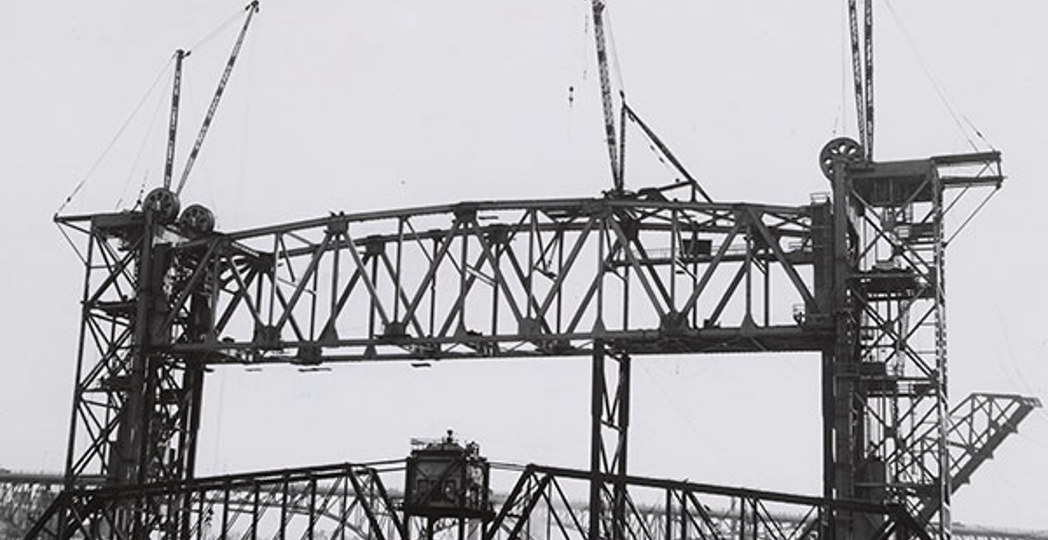Iconic Cleveland: The History Behind the Bridges of The Flats in Cleveland
by Colleen Smitek | Jul. 17, 2009 | 4:00 AM

Photograph Collection, Cleveland Public Library
Conrail or "Iron Curtain" Bridge
Year built: 1956 | Length: 267 feet
Most of the time, this lift bridge is in the down position to prevent train accidents. But on summer weekends, boat traffic trumps the 70 to 90 daily freight trains, and the bridge's
default position is up. (It is raised to a height of 97 feet by a system of cables and counterweights.) What Filippell finds amazing about this one (and other railroad-owned bridges) is its longevity. While the Inner Belt Bridge, built in 1959, needs
to be replaced, this bridge is in excellent shape — despite its moving parts and "astonishingly higher" loads.
Baltimore and Ohio Railroad Bridge
Year Built: 1907 | Length: 334 feet
This abandoned jackknife bridge, built in 1907 by the King Bridge
Co., is the longest single-track Scherzer rolling lift bridge in the world. "It's like having a David here, and nobody knows it," Filippell says, referring to Michelangelo's gem. The beauty of this bridge is that it requires much less steel to build than
a lift bridge. The problem, he says, is the giant cast-iron counterweights and the "havoc" they create after years of rolling over the bridge's foundation. Unused for decades, it remains in the up position and is lit at night.
Center Street Bridge
Year
Built: 1901 | Length: 345 feet
"That's a neat little bridge," Filippell says. Its first incarnation was built in the early 1800s as a floating log connection between Cleveland and Ohio City. In 1836, the construction of a rival span prompted the so-called Bridge War, in
which three men were wounded before the courts ruled two bridges could coexist. Rebuilt six times, the current steel swing bridge, which rotates on a pier in both directions, was constructed in 1901. Romas Pliodzinskas, section chief of Cleveland's Bureau
of Bridges and Docks, says it's the last of its kind.
Trending
-
1
-
2
-
3
-
4
-
5










